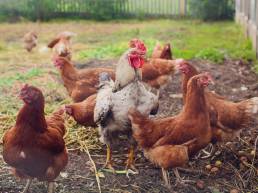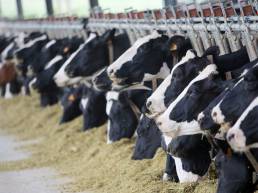E.F.S. believes that nature has a solution for everything.
Mycotoxins are part of a natural process and it appears that masked mycotoxins are present in crops, feed materials and feed. Maybe you have already heard the term ‘masked mycotoxins’. E.F.S. will explain it in more detail.
In addition to the much-analysed mycotoxins such as AFLA, DON and ZEA, masked mycotoxins also exist. Masked mycotoxins are forms of mycotoxins that are transformed/detoxified by the plant itself as a form of self-protection. During this process, a plant can, for example, bind a saccharide to a mycotoxin. With field fungi, mycotoxins are formed during crop growth and the plant attempts to protect itself from these mycotoxins. Therefore mycotoxins originating from Fusarium fungi are most susceptible to transformation into ‘masked mycotoxins’, as the Fusarium fungi is a field fungi.
Examples of masked mycotoxins are DON-3-Glc (deoxynivalenol-3glucoside) which is formed from DON and the formation of ZEA-14-Glc (zearalenone-14-glucoside) from ZEA. Laboratories are not yet able to analyse all (masked) mycotoxins. Some ‘masked mycotoxins’ can already be detected and analysed, but in this case the term ‘masked’ no longer applies. In the majority of identified, masked mycotoxins, the active part of the mycotoxins appears to be intact. It is this active part that causes the negative, harmful effects of mycotoxins in humans and animals. Tox-Aid® can de-activate and ‘disarm’ the active part of mycotoxins and is therefore also effective against masked mycotoxins.
It appears that certain masked mycotoxins are less powerful than unbound mycotoxins, as the growing plant had already started detoxifying the mycotoxins. The process of transformation can also mean that masked mycotoxins are in fact more harmful than the original form. In addition to these negative traits, some masked mycotoxins are retransformed into their original state in the body, a process that is mainly attributed to colon bacteria. Further research must clarify the risks that masked mycotoxins pose to animal health.
Tox-Aid® also deactivates masked mycotoxins via a combination of the right bentonite, inactivated yeast and herbal extracts. Hereby Tox-Aid® will combat the negative consequences of (masked) mycotoxins.
Questions? Please feel free to contact the E.F.S. team.
You may also like
Tox-Aid® organic authorisation
June 29, 2020
Tox-Aid® is on the organic input list! Tox-Aid® has been authorised for use in organic feeds to limit the negative effects of mycotoxins in the animal. This product has a three-stage effect, i.e. deactivation by means…
Tox-Aid®: Also deactivates Fumonisin and Ochratoxin
May 20, 2017
Tox-aid® is a natural solution that deactivates mycotoxins. In three steps mycotoxins in the animal are rendered harmless. E.F.S. believes nature has a solution for everything. However, this also needs to be…
Tox-Aid®: Mycotoxins in dairy farming
July 23, 2016
Mycotoxins are an underestimated problem in livestock. More knowledge has been gained in the past few decades about fungi, mycotoxins and their effects. Therefore fungi are more and more recognised as a problem at…






